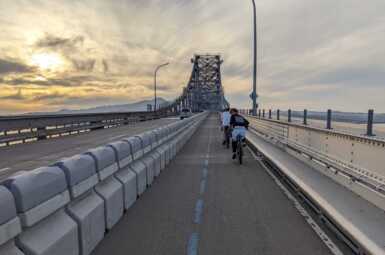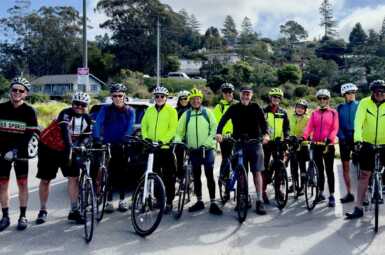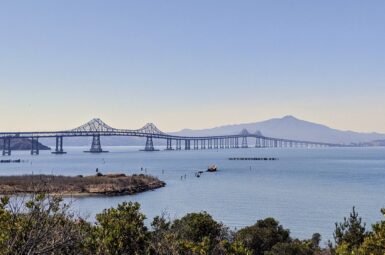November 2022 Election 2022 Larkspur City Council Candidate Questionnaire
As a 501(c)3 nonprofit organization, Marin County Bicycle Coalition cannot endorse candidates for public office, but we are able to share information so that you can arrive at your own conclusion. Below are the 2022 City of Larkspur candidates’ responses to our questionnaire on bicycling in Marin. We have made no content changes. Thanks to the candidates for their time and thoughtful answers.
Candidates’ campaign websites may be accessed by clicking on those with a highlighted name. Those who did not provide a campaign website are not highlighted.
Here are the candidates on the November ballot for the City of Larkspur:
-
Kevin Carroll
-
Kevin Haroff
-
Jay Holland
-
Catherine Way
Personal Travel
1. Do you ride a bicycle? If so, for what purposes and how often? (transportation/road/mtb)
Kevin Carroll:
-
a. Commuting:
-
b. Errands:
-
c. Road recreational:
-
d. Mountain biking or trails:
Never. I stopped riding 20 years ago when I moved to Redwood Highway in Larkspur. I tried to continue riding for errands 2-3 days a week, and for exercise 3-4 days a week. In the first week I had two many close calls with traffic. I donated the bike to Trips for Kids.
Kevin Haroff:
-
a. Commuting:
-
b. Errands:
-
c. Road recreational:
-
d. Mountain biking or trails:
I occasionally ride a bicycle to attend local meetings and for recreational purposes. I previously rode the bike to some extent for commuting purposes in San Francisco, but given changes in work circumstances that is no longer an option.
Jay Holland: No response
Catherine Way:
-
a. Commuting:
-
b. Errands:
-
c. Road recreational:
-
d. Mountain biking or trails:
I ride a bicycle several times a week, mostly for running errands and pleasure riding around Central Marin. Since I work from home I don’t have a commute. I have never mountain biked but prefer to stay on roads.
2. If you own a bike, what type of bike(s) do you have and ride? If not, when was the last time you rode a bike, and where (on vacation, for example)?
Kevin Carroll:
Road bike. See above
Kevin Haroff:
I own a 20 year old R600 Cannondale 28 aluminum frame road bike. Currently I us it primarily for local errands and recreational purposes.
Jay Holland: No response
Catherine Way:
When I dropped my daughter off at University of Oregon 10 years ago we bought matching bikes in Eugene. It was a white, “Marin” bike called Sea Drift. I had a wire basket mounted on the back. Three years ago I bought a, new electric bike from The New Wheel called The Gazelle. I love how the pedal assist helps with Marin hills.
Vision
3. In your own words, describe your vision for the future of transportation in Larkspur.
Kevin Carroll:
I would like to see a pedestrian, bike and electric friendly community. By 2030 over 30% of Marin residents will be over 65. While some will need electric vehicles (cars/carts?), because of our topography electric bikes and trikes can play a bigger role. The city will need to provide the charging stations, bike racks and wider bike lanes to accommodate seniors.
Kevin Haroff:
My vision for transportation in the City of Larkspur is multi-model. Larkspur includes a large aging community for whom bicycle transportation may not be particularly viable. The hilly terrain throughout our local neighborhoods also creates challenges to the widespread adoption of bicycles as a primary form of transportation.
I have supported the expansion of multi-modal pathways throughout our community since I was first elected to City Council. Our Measure B sales tax, which I supported publicly several years ago, has allowed the City to significantly improve the quality of our paved streets and roadways, including bicycle paths.
Jay Holland: No response
Catherine Way:
My vision for the future of transportation in Larkspur is one of “Complete Streets” where the options for moving around in our community engages with all the ways that people get about, e.g. Bikes, wheelchairs, strollers, walkers, and cars. As the chair of the Age-Friendly Larkspur Committee I have started to focus on all levels of accessibility for our residents and visitors. I would also like to see better signage and flexible poles that separate traffic from bike lanes.
Traffic
A large proportion of peak hour traffic is made of people driving their children to school. While some people live too far to easily walk or bike to school, many parents are simply afraid to let their children travel by foot or by bicycle because of the high volume and speeds of car traffic.
4. What strategies would make more parents feel safe with their children walking or biking to school, thereby reducing traffic and making everyone else’s trip to school a little safer?
Kevin Carroll:
The city must maximize Class IV and Class I bikeways. We should be widening sidewalks on routes to schools for elementary and middle school riders. Maximize separated street lanes for high schoolers and adults. We should be doing more daylighting of intersections and driveways.
Kevin Haroff:
I believe the City already has done a terrific job in addressing safety concerns for families whose children attend Redwood High School and Hall Middle School. I am very proud of the work we have done during my tenure on City Council in improving safety and traffic flow on Dougherty Drive. As a City Councilmember, I will continue to focus on transportation-related safety issues throughout our community.
Jay Holland: No response
Catherine Way:
The traffic in Larkspur is dramatically different in the summer months when school is out of session. There are seven schools in close proximity to each other in the Twin Cities. Strategies for making parents feel safe with their children walking or biking to school must take a multi-pronged approach.
A few suggestions for younger riders:
-
Parent Ambassadors who ride bikes along with the kids on specific, high traveled routes. They would be identifiable with vests and known to the parent community.
-
Central Marin Police community officer on a bike and riding the paths during peak school travel time.
-
Crossing guards at priority intersections where kids on bikes cross traffic lanes.
-
Organizing neighborhood clusters of students that meet at a specific location and ride together to school. Give them catchy names so that kids would want to “join the club”.
-
MCBC or Central Marin Police could lead “Bike Safety” class at schools and required for students to attend once per year.
A survey from the Transportation Authority of Marin (Figure 18, p. 51) found that over half of Marinites would like to bike more than they currently do. This backs up research that shows that over 50% of adults are interested in biking, but concerned about the threat of fast-moving cars.
5. What concrete steps can be taken to allay these concerns and make people feel safe on bicycles?
Kevin Carroll:
Working with the Park & Recreation department the Bicycle Coalition should develop a program to encourage adult seniors to become riders again. Organize group rides with themes similar to the Larkspur walking tours. Group rides to historic places, flower/nature rides, etc. By starting out as a group ride it can be demonstrated that there is safety in numbers, they might rediscover both the joy of riding and the health benefits. A recent study shows that the over 65 population in Marin is expected to be 30% by 2030. These are the people that vote consistently and should be cultivated by MCBC. The city should be woking with MCBC, the Villages programs, any other senior focused
groups.
Kevin Haroff:
I believe the City already has taken significant efforts to enhance the safety of bicyclists, through (for example) the expansion of bike lanes on Magnolia Avenue and the North-South Greenway project east of Highway 101. I have been a consistent supporter of these projects, and I look forward in particular to completing the Larkspur component of the NSF project in cooperation with the Transportation Authority of Marin (TAM). If reelected to City Council, I anticipate an expanded role in working with TAM on transportation issues generally affecting our local community.
Jay Holland: No response
Catherine Way:
For the adult rider, I understand the hesitation with riding in the roadway with the threat of fast-moving cars. So many of our roads are narrow and the rider is essentially in the vehicle path. Because of this, I try to always use the bike pathways to the greatest extent. For example, I went from my home in Larkspur to the Office Depot in San Rafael almost entirely on a bike path and thru the tunnel. We should create more contiguous pathways like this for the adult rider to feel more secure.
Safety
Traffic deaths and injuries are on the rise, both nationally and in Marin (this includes all road users, not just bicyclists). Many cities in California have enacted so-called Vision Zero
resolutions, setting an explicit goal to eliminate traffic deaths.
6. If elected to town Council, will you support such a resolution? If so, what actions do you see as being needed to improve safety? What are the relative roles of infrastructure, enforcement, and education?
Kevin Carroll:
Larkspur has already passed that resolution. We have a City of Larkspur Bicycle and Pedestrian Master Plan. The last time the plan was updated was 2017 (it was supposed to be updated in 2020, but I find no results). But it is apparently a dead document. I was disappointed that during the recent discussion of the Magnolia repaving project the primary focus was protecting parking spaces. While widening the sidewalks was mentioned in relation to sidewalk dining and wine walks, there was no serious discussion of accommodating bicycles pathways, racks or
charging stations.
Kevin Haroff:
I have not yet had an opportunity to consider so-called Vision Zero resolutions, but I would be happy to do so if reelected to the Council.
Jay Holland: No response
Catherine Way:
If elected I would support a Vision Zero resolution that has the goal of eliminating traffic deaths. Larkspur can always make improvements to our roads and pathways to enhance safety for cyclists. We take a Complete Streets approach to upgrading travel surfaces but this is always a matter of project funding. In the past decade, Larkspur has passed several sales tax measures specifically to fund road improvements. Because of this, Larkspur has gone from near the bottom of Bay Area cities in road disrepair to near the top with 3⁄4 of our roadways undergoing or completed in resurfacing. This greatly enhances safety for riders. However, we need to continue this process.
Enforcement of traffic and speed laws can always be improved but police resources can be limited. I would support finding out the data on where most infractions occur and increase patrols in those areas. For instance, the huge number of weekend riders that come through the center of Larkspur in large groups which don’t stop at stop signs causes concern to the local residents who might be walking into town or using crosswalks. That unsafe behavior could be a focus in an effort to increase safety.
I would also support road upgrades that those which were recently done in Mill Valley. Bike lanes were created on Blythdale which included white, plastic poles that separate the drivers from the riders. At the highly trafficked areas of Magnolia and Bon Air, I would like to see similar lane separation.
Also, in order to prioritize safety projects I would look for the data on incidents and focus efforts there. According to Bay Area Bicycle Law, most common types of dangers for cyclists
are:
-
Falls Due to Dangerous street conditions
-
Getting Doored
-
Getting sideswiped or pushed off the road.
-
Driveway and side street intersection crashes.
-
Failure to yield to the cyclist
The recently published study called “The Most Dangerous Areas for Cyclists in Marin County”
(https://www.walkuplawoffice.com/2022/08/08/study-the-most-dangerous-areas-for-cyclists-in-marin-county/) has highlighted one intersection in the Larkspur jurisdiction – Bon Air Road and Magnolia. Recently this bridge area has been renovated and new right turn protected bike lanes were put in. This is an example of developing safer infrastructure for bikes when road repairs are made.
Climate Change
The latest IPCC report states clearly that greenhouse gas emissions need to be reduced quickly in order to stave off the worst effects of climate change. According to Larkspur’s most recent Greenhouse Gas Inventory, transportation accounts for a majority (53%) of local greenhouse gas emissions. Given that battery electric cars make up 3% of California’s vehicle
fleet, and only 12% of new cars sold.
7. does reducing overall driving have a role in meeting our climate targets? If so, what policies can support transit, walking, and bicycling in place of driving for short trips?
Kevin Carroll:
Implementation of the current master plan, and updating it to fit in the role electric scooters and bicycles can play in “the last mile” in our hillside community. The recent bankruptcy of BOLT which would have brought electric rental bike to Larkspur SMART station, ferry landing and the downtown is a major blow. Both the city and Transportation Authority of Marin should follow the City of Richmonds lead in reviving this service or establishing a countywide municipal bike rental service.
Kevin Haroff:
If reelected, this will be my third term as a member of the City Council – I was elected first in 2013 after a brief period serving as a City Planning Commissioner. As a Councilmember and former two-term Mayor, I was able to support important local initiatives on public infrastructure, fiscal responsibility, and housing policy.
Involvement on City council has allowed me to engage our community on a range of important environmental and social equity issues. Those include local responses to climate change, sea level rise, and homelessness. I am particularly proud of my involvement with MCE Clean Energy, a joint powers authority for which I currently serve as the chair of the Board of Directors’ Executive Committee.
My continued involvement in these roles is largely dependent on my ability and commitment to serve on Larkspur’s City Council, and that may be the most important reason why I am seeking another term as councilmember.
Jay Holland: No response
Catherine Way:
The reality of climate change is upon us already. Every effort to reduce vehicle driving of non-electric cars will help reduce the risks. Creating safe walking paths that connect key locations is an important measure to get people from their cars for minor errands. I have always thought that government should supplement public transportation so that it is free to ride – thereby
increasing ridership. I know this is being tested in some locations in the Bay Area so perhaps there will be data soon.
Project Delivery
Bicycle/pedestrian plan implementation is notoriously slow with typically fewer than one new bike lane project opening every year.
8. What steps would you take to hasten the project delivery process from inception to ribbon-cutting?
Kevin Carroll:
We need to be actively working with the Marin Transportation Authority Bicycle/Pedestrian Advisory Committee to monitor the funds and programs available for the City of Larkspur.
Kevin Haroff:
I believe the City of Larkspur has been among the most progressive communities in Northern California in promoting establishment of bike lanes along virtually all of our principal transportation corridors. I do not believe that work has been materially impaired by our routine admirative processes.
Jay Holland: No response
Catherine Way:
One of my biggest frustrations in governance is the amount of time is takes to see projects completed. Look at how long it took for the Bon Air bridge replacement due to California State
and Federal regulations? Marin is a very small county with a lot of small cities that merge into each other. As an elected person, I would encourage more grouping of bicycle and pedestrian
projects so that they move seamlessly between jurisdictions. That might speed up completion and actually make for more consistency.
In all things, there is a tension between “perfect but slow” and “quick and good enough.” Recent years have seen a move toward so-called “quick-build” infrastructure, allowing reconfiguration of streets to facilitate safer walking/biking without a years-long engineering process. While quick-build projects may be less aesthetically pleasing than the standard process, they are cheaper and happen much faster.
9. How do you rank aesthetic concerns of biking/waking infrastructure in comparison to those of cost and project speed?
Kevin Carroll:
I would be concerned with aesthetics in the downtown Magnolia section of Larkspur. Routes to/from schools should be given the highest priority for implementation.
Kevin Haroff:
I believe all these concerns must be taken into account in a balanced fashion, which is the approach the City of Larkspur has taken throughout my time on City Council.
Jay Holland: No response
Catherine Way:
I think aesthetic concerns of infrastructure are important but shouldn’t weigh down the process to the point of interminable delays. The overall responsibility is to safety of the community and then what it looks like. I regularly attend the League of California Cities annual meeting and participate in workshops about street infrastructure. There was an interesting workshop about “popup” parks and bike paths that showed how these can be implemented in a community quickly. Of course, this was before the COVID-19 pandemic and the parklet phenomenon which changed the dialog completely.
Car Parking
Much of Marin has narrow streets, but on-street parking typically takes up between 30-40% of the street space between the curbs, and is often in tension with the need for dedicated bike lanes.
10. In your mind, are bike lanes ever sufficiently important to justify removing on-street parking, and in what circumstances would you consider that to be the case?
Kevin Carroll:
Safe routes to schools should be given priority over parking spaces.
Kevin Haroff: No response
Jay Holland: No response
Catherine Way:
Larkspur is comprised of five different sections with a variety of streetscapes, curbs, and on-street parking. Developing a plan for the narrow streets will differ from a plan in the Larkspur Landing community. I would consider removing on-street parking for safety of a bike path in a highly trafficked area such as a pathway to a local school.
11. Would you say that LArkspur has (A) not enough, (B) too much, or (C) just enough space dedicated to parking cars? If (A), what areas of town would you consider to convert to parking, and if (B) what would you do with the space that was previously parking?
Kevin Carroll:
In my experience I think Larkspur has enough parking. Conversion of spaces should be done on a neighborhood by neighborhood basis with input from those communities.
Kevin Haroff:
Both automobile and bicycle parking are a continuing challenge for our city. Balancing the interests of our cycling community and with City residents and commercial interests is a challenge, and much work remains to be done to resolve those competing interests.
Jay Holland: No response
Catherine Way:
As a councilmember I hear a lot of complaints about not enough parking in the historic downtown corridor. There is only one city-owned parking lot on the corner of Magnolia and Ward Streets with about 37 spots. The rest of Larkspur seems to have sufficient parking in most neighborhoods. I don’t think that it is reasonable to convert this area since parking in the downtown is so limited.
Bike Parking
Many MCBC members report challenges with bicycle parking in the downtown area. Racks are few and far between, or not easily visible from shops and areas with high levels of foot
traffic.
12. What steps or policies would you advance on the council agenda to bring about better bicycle parking and reduce the chance of bicycle theft?
Kevin Carroll:
Again, my answer in number 6, active implementation of the City of Larkspur Bicycle and Pedestrian Master Plan
Kevin Haroff:
See response to Item 11.
Jay Holland: No response
Catherine Way:
Larkspur recently remodeled our main Magnolia Street corridor and included new bike racks in key locations. I think this can be done is other parts of Larkspur where people park bikes to
visit restaurants and shops. I put forward that we should do a remodel of Magnolia and widen our sidewalks by removing some parking. My vision was to create open seating areas for
restaurants, art installations, benches, more bike parking, etc. This would be opened the roadway even more for comfortable bike access. However, I did not win that vote and the
traditional street/sidewalk surface was returned.
I am not aware of a bike theft issue in Larkspur with the exception of some of the school bike parking areas.
Due to recent changes in state law, the cities and towns of Marin are being compelled to zone for more multi-family housing. However, traffic is already unsustainable. To address this,
many cities have implemented what is known as Transportation Demand Management (TDM) in new developments, including replacing some car parking with bicycle parking, giving residents transit passes, or providing shared cars.
13. Do you support steps to require secure bike parking in new housing (and other policies to reduce driving), and, if so, how would you seek to implement them?
Kevin Carroll:
The key is making sure the applicant and Planning Department have followed the guidelines in the City of Larkspur Bicycle & Pedestrian Master Plan in the planning stages of all new development before they reach the Planning Commission or City Council.
Kevin Haroff:
See response to Item 11.
Jay Holland: No response
Catherine Way:
I think that requiring secure bike parking and electric bike charging stations would be a great step to increase our bicycle support in new housing being built in Larkspur. Most of the proposed housing that has been put forward for Larkspur are multi-family structures with underneath building parking. This would be a perfect place to include secure bike parking (a
locked bike cage) for the residents rather than requiring them to cart a bike up to their unit.
Wrap Up
14. Why should people who ride bikes (or those who want to ride bikes but don’t yet) vote for you?
Kevin Carroll:
Thanks to Covid and Zoom i have been able to participate in the Sausalito Pedestrian & Bicycle Committee. I have learned a lot from bike advocates, and I hope i have helped them to see safety issues from a taxi drivers persecutive. I have had a bike rack on my taxi for many years and have helped both tourist and locals when they break down, or just overestimate their abilities.
I want to make Larkspur safe for me to ride again.
Kevin Haroff:
See responses to Items 3-5.
As stated, I am an ardent supporter of expanding multi-modal transportation opportunities throughout the City of Larkspur and Marin County at large. I feel confident that will be recognized as our citizens come out to vote in November.
Jay Holland: No response
Catherine Way:
People who ride bikes should vote for me for Larkspur City Council because I’m an experienced councilmember who understands how to get projects done. Also, I am known and respected by neighboring towns and their councils so we can work collaboratively on bike and pedestrian projects.
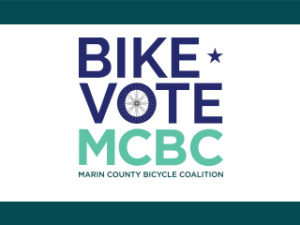
members make it happen!
We’re fighting for a more bike-friendly future in Marin. Are you with us? Join Marin County Bicycle Coalition today.
